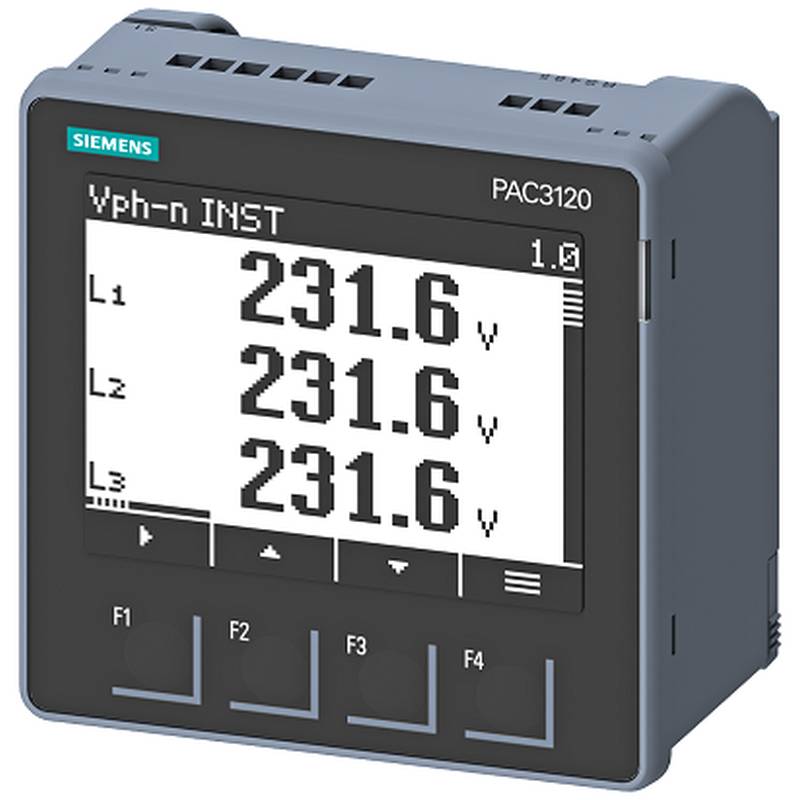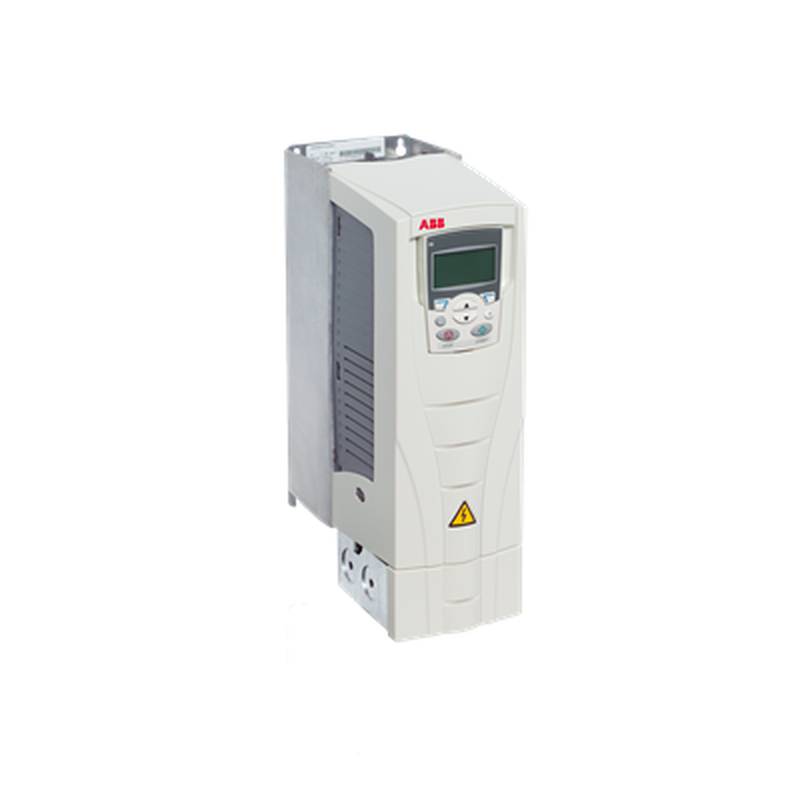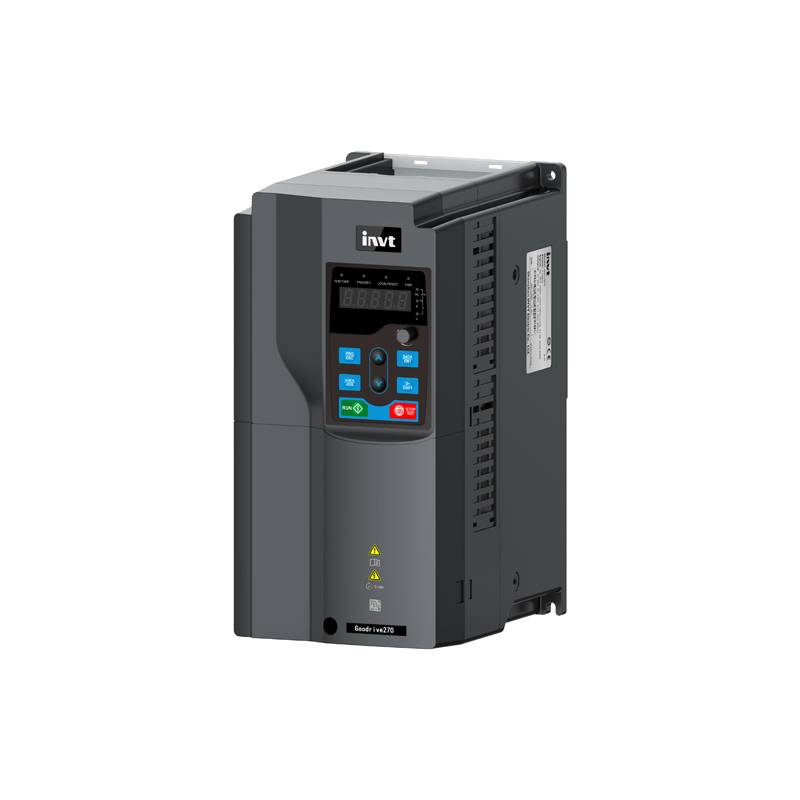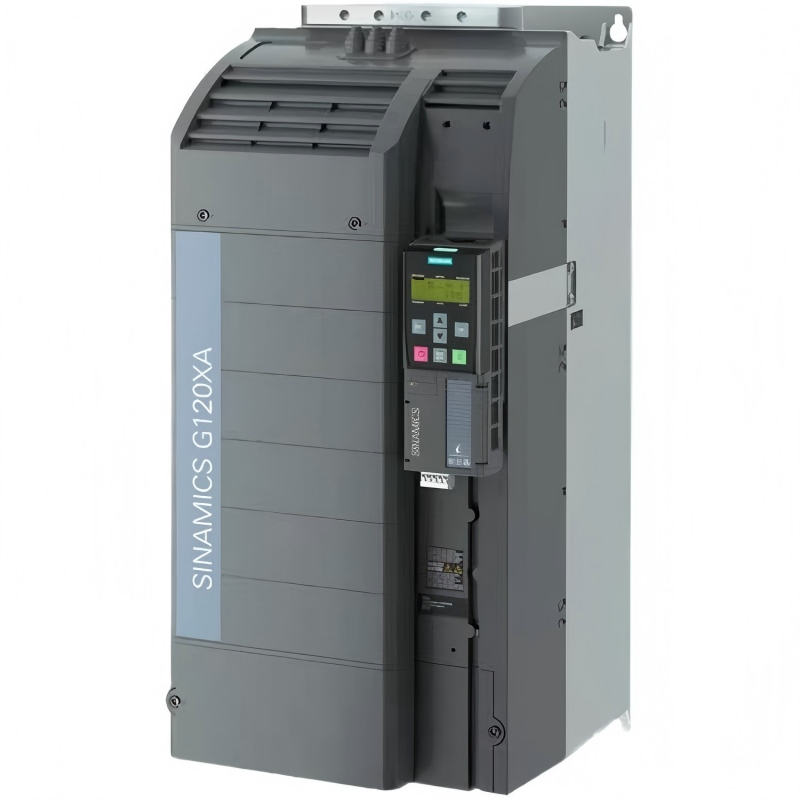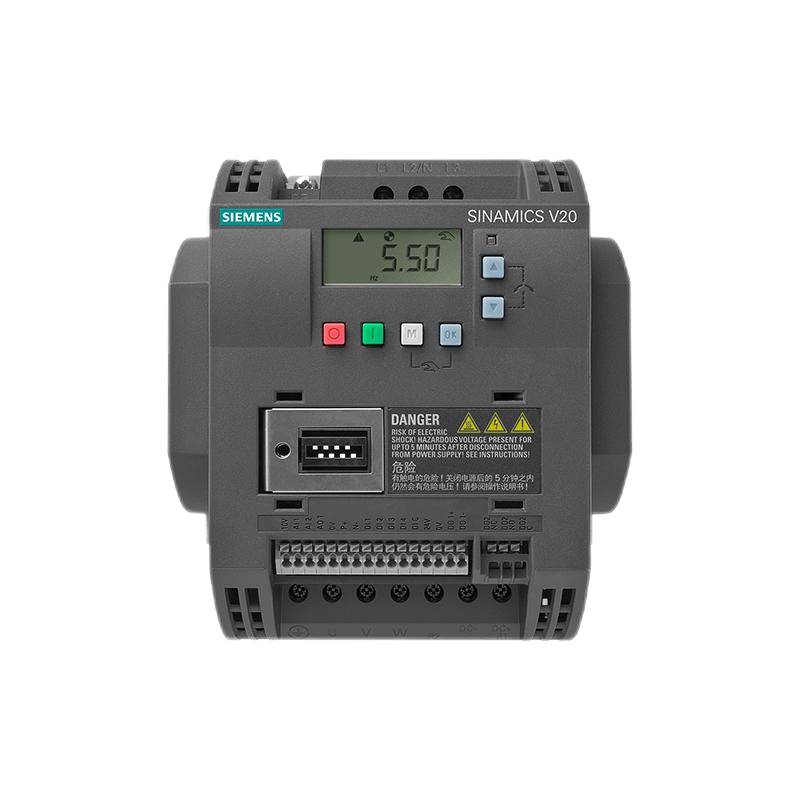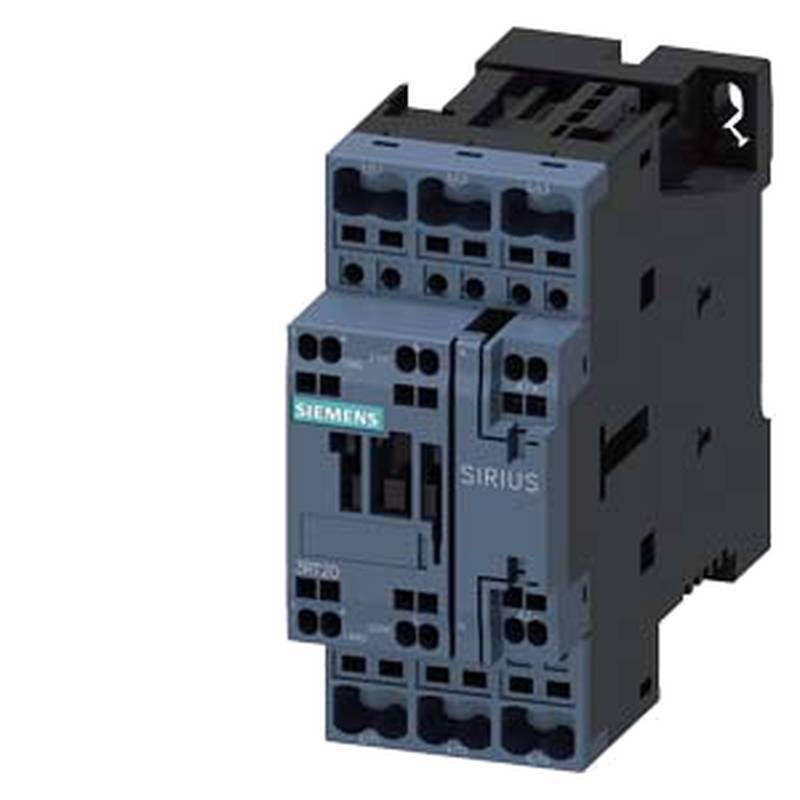
The Siemens 7KM3220-1BA01-1EA0 stands as a pivotal component within the SENTRON metering family, designed for precise current input measurement in industrial and commercial power distribution systems. This module offers robust accuracy, characterized by a voltage measurement range of 400V LL/230V LN, and a current measurement capability of 5A. Its fundamental role is to facilitate detailed energy monitoring and analysis, enabling users to optimize consumption, detect anomalies, and ensure operational efficiency. The module's integration into Siemens' broader power management solutions underscores its significance in delivering reliable and insightful electrical data.
Product Specifications
| Parameter | Specification |
| :------------------------ | :------------------------------------------------ |
| Product Type | Current Input Measurement Module |
| Siemens Part Number | 7KM3220-1BA01-1EA0 |
| Voltage Measurement Range | 400V LL / 230V LN |
| Current Measurement Range | 5A |
| Communication Interface | Integrated (details depend on base device) |
| Mounting Type | DIN rail |
| Protection Class | IP20 (module itself) |
| Operating Temperature | -25°C to +55°C |
| Dimensions (H x W x D) | Typically designed to fit standard panel depths |
Core Features & Market Positioning
The Siemens 7KM3220-1BA01-1EA0 distinguishes itself through its high precision and reliability, critical attributes for accurate power metering. As part of the SENTRON series, it benefits from Siemens' extensive experience in industrial automation and energy management, positioning it as a dependable solution for demanding environments. Its core advantage lies in its ability to provide granular data on current flow, which, when combined with voltage measurements, allows for comprehensive energy calculations and power quality analysis. This capability is essential for facility managers, energy consultants, and system integrators seeking to implement effective energy-saving strategies and comply with stringent regulatory requirements. The module's robust design ensures consistent performance even under challenging industrial conditions, solidifying its market standing as a high-quality, long-term investment for any power monitoring infrastructure.
Key Application Scenarios
This current input module finds extensive application across various industrial sectors, including manufacturing plants, data centers, commercial buildings, and utility substations. In manufacturing, it is vital for monitoring the energy consumption of individual machines or production lines, identifying peak loads, and optimizing energy usage to reduce operational costs. For data centers, precise energy measurement is crucial for managing cooling systems and server power demands, directly impacting operational expenditure and efficiency. In commercial settings, the 7KM3220-1BA01-1EA0 aids in sub-metering for tenant billing, load balancing, and identifying energy wastage in common areas or HVAC systems. Utility companies leverage such modules for grid monitoring, load profiling, and ensuring accurate billing for large industrial consumers. The module's compatibility with Siemens' power monitoring systems facilitates centralized data collection and analysis, supporting proactive maintenance and intelligent energy management strategies.
Practical System Integration Guidance
Integrating the Siemens 7KM3220-1BA01-1EA0 into an existing power monitoring system typically involves its installation within a compatible Siemens meter (e.g., a SENTRON PAC series device) or as part of a custom panel setup. The module connects to the primary current transformers (CTs) via dedicated input terminals, requiring careful attention to polarity and CT ratio configuration within the connected meter's settings. For accurate voltage measurement, the module interfaces with the system's phase and neutral conductors. Proper wiring is paramount to ensure both safety and measurement accuracy; consult the specific installation manual for the base meter device for detailed wiring diagrams and terminal designations. Commissioning involves configuring the meter with the correct CT ratios and voltage system parameters to ensure the 7KM3220-1BA01-1EA0 accurately reports current values. Communication with higher-level systems, such as SCADA or building management systems, is usually facilitated through integrated communication modules (e.g., Modbus RTU/TCP, PROFIBUS) connected to the base meter.
Operation and Risk Mitigation
Operating the Siemens 7KM3220-1BA01-1EA0 requires adherence to electrical safety standards. The module itself is designed for indoor use and carries an IP20 protection rating, meaning it must be installed within an enclosed panel to prevent contact with live parts. Before installation or maintenance, always de-energize the circuit. Accurate current measurement relies on correct CT installation and connection; incorrect CT ratios or reversed phasing will lead to erroneous readings. System integrators should perform thorough testing after installation to verify that measured values align with expected loads. While the module is designed for reliability, potential issues can arise from incorrect configuration, transient voltage surges, or physical damage. Fault codes or diagnostic messages are typically reported through the connected Siemens meter's interface, guiding troubleshooting efforts. Regular calibration and verification, as per industry best practices and manufacturer recommendations, will further mitigate risks and ensure sustained measurement accuracy.
Scalability & Long-Term Value
The Siemens 7KM3220-1BA01-1EA0 offers significant scalability and long-term value by integrating seamlessly within the broader Siemens SENTRON portfolio and embracing industrial digital transformation trends. Its modular design allows for expansion; additional measurement modules or communication options can be added to a base meter as monitoring requirements evolve. Compatibility with standard industrial communication protocols ensures that data from this module can be integrated into various SCADA, HMI, and energy management software platforms, including those supporting the Industrial Internet of Things (IIoT). This facilitates the creation of sophisticated energy dashboards, predictive maintenance algorithms, and automated energy optimization routines. By providing accurate, reliable data, the 7KM3220-1BA01-1EA0 supports informed decision-making, enabling businesses to adapt to changing energy landscapes, reduce operational costs, and enhance overall operational resilience over the lifecycle of their power infrastructure.
Frequently Asked Questions
What is the primary function of the Siemens 7KM3220-1BA01-1EA0?
This module serves as a current input measurement component for Siemens power meters. It accurately captures current flow data essential for energy monitoring. Its precise readings enable detailed analysis of electrical consumption patterns.
It is designed to work with specific Siemens SENTRON series energy meters. The module converts measured current into signals usable by the meter for calculation. This allows for granular tracking of power usage across various applications.
The data gathered is vital for applications such as billing, load management, and power quality analysis. Understanding current levels helps optimize industrial processes and reduce energy waste. It's a key piece for effective energy management strategies.
How is the Siemens 7KM3220-1BA01-1EA0 installed in a power meter?
Installation involves inserting the module into a dedicated slot within a compatible Siemens energy meter. The module's current input terminals connect to external current transformers (CTs). It is crucial to observe correct polarity and CT ratio settings.
The physical connection ensures that the current flowing through the CTs is accurately measured by the module. Proper seating of the module within the meter is essential for reliable data transfer. Refer to the specific meter's manual for precise installation steps.
Once physically installed and wired, configuration within the meter's software is required. This ensures the meter interprets the current data correctly. Accurate setup is key to obtaining reliable energy consumption figures.
What are the key technical specifications for current measurement on this module?
The Siemens 7KM3220-1BA01-1EA0 is designed for a nominal current input of 5A. This rating dictates the required specifications for the external current transformers used. It ensures the module operates within its designed accuracy parameters.
This 5A input is standard for modules that interface with higher-ratio CTs (e.g., 100/5A, 1000/5A). The actual measured current in the system can be significantly higher. The module then scales this input signal proportionally.
The module's accuracy for current measurement is critical for precise energy billing and analysis. It is engineered to meet stringent industry standards for metering accuracy. This ensures reliable and trustworthy energy data reporting.
What is the voltage measurement range supported by this module?
This module operates within a specified voltage measurement range to complement its current sensing capabilities. It supports Line-to-Line (LL) voltages up to 400V and Line-to-Neutral (LN) voltages up to 230V. This range is typical for many industrial and commercial power systems globally.
The voltage range ensures that the connected meter can accurately calculate apparent power, active power, and reactive power. These calculations are fundamental for comprehensive energy management and analysis. It allows for monitoring across different voltage configurations.
By providing both current and voltage inputs, the 7KM3220-1BA01-1EA0 enables a complete picture of electrical energy consumption. This dual capability is essential for understanding power factor, harmonics, and overall system efficiency.
What communication interfaces are available for the 7KM3220-1BA01-1EA0?
The Siemens 7KM3220-1BA01-1EA0 itself is a measurement module and does not typically have standalone communication interfaces. Its communication capabilities are inherited from the base Siemens meter it is installed within. Common interfaces include Modbus RTU/TCP, PROFIBUS, and PROFINET.
These integrated communication options allow the meter and its modules to seamlessly connect to higher-level systems. This includes SCADA systems, building automation platforms, and cloud-based energy management solutions. Data can be transmitted efficiently for monitoring and control.
The specific communication protocol supported will depend on the chosen Siemens SENTRON meter model. Users should consult the documentation for their particular meter to determine available communication ports and protocols for data retrieval.
What industries commonly use the Siemens 7KM3220-1BA01-1EA0?
This module is widely adopted in manufacturing facilities for detailed process energy monitoring. It helps identify energy inefficiencies in machinery and production lines. This aids in cost reduction and operational optimization efforts.
Commercial sectors, including large office buildings and retail spaces, utilize it for sub-metering and tenant billing. Data centers benefit from its precise measurement for managing high power demands and cooling systems. It's integral for accurate energy accounting.
Utilities and grid operators also employ such modules for load profiling and network monitoring. This allows for better management of power distribution and identification of consumption trends across different customer segments.
Does this module support direct connection to high current circuits?
No, the Siemens 7KM3220-1BA01-1EA0 does not directly connect to high current circuits. Its current input is rated for 5A. This is a standard design for power meter current input modules.
To measure high currents, it relies on external current transformers (CTs). These CTs step down the high primary current to a safe and manageable 5A secondary current. The module then accurately measures this scaled-down current.
The use of CTs is a fundamental safety and design principle in electrical metering for high-power applications. It allows for isolation of the metering equipment from the high-voltage, high-current primary circuit.
What is the expected accuracy of the Siemens 7KM3220-1BA01-1EA0?
The accuracy of the Siemens 7KM3220-1BA01-1EA0 is typically high, adhering to international metering standards like IEC 62053-22 for active energy and IEC 62053-23 for reactive energy. Specific accuracy classes (e.g., Class 0.5S or Class 1 for energy) depend on the overall meter configuration and standards it complies with.
This high accuracy ensures that energy consumption readings are reliable for billing, cost allocation, and performance monitoring. It minimizes measurement discrepancies, leading to more trustworthy data for decision-making. Precision is paramount in energy management.
Users should refer to the technical datasheet of the specific Siemens SENTRON meter model housing this module for precise accuracy figures and classes. Proper installation and calibration are essential to maintain this specified accuracy over time.
How does this module contribute to energy management and IIoT integration?
This module provides the foundational, accurate current data necessary for any sophisticated energy management system. By capturing precise current flow, it enables detailed consumption analysis, load profiling, and anomaly detection. This granular data is the bedrock for identifying savings opportunities.
For IIoT integration, the data from this module is transmitted via the meter's communication interfaces to cloud platforms or edge devices. This allows for real-time monitoring, predictive analytics, and integration into smart grid applications. It bridges the physical world of power usage with digital intelligence.
The module's reliability and accuracy ensure that the IIoT ecosystem receives trustworthy data, enabling automated responses, optimization strategies, and comprehensive reporting. It is a critical node for digitizing energy insights.
What are common troubleshooting steps if the module provides incorrect readings?
Begin by verifying the current transformer (CT) connections. Ensure they are correctly wired, not reversed, and properly seated. Check that the CT ratio configured in the meter's settings exactly matches the installed CTs.
Inspect the voltage connections to the meter as well, confirming correct phase and neutral wiring. Incorrect voltage readings can also impact the accuracy of calculated power values. Ensure the meter is set to the correct system voltage configuration (e.g., 3-phase, 4-wire).
Finally, consult the Siemens meter's diagnostic features or error logs for any specific fault codes related to the measurement module. Check the module's physical seating within the meter and ensure it is firmly in place.














